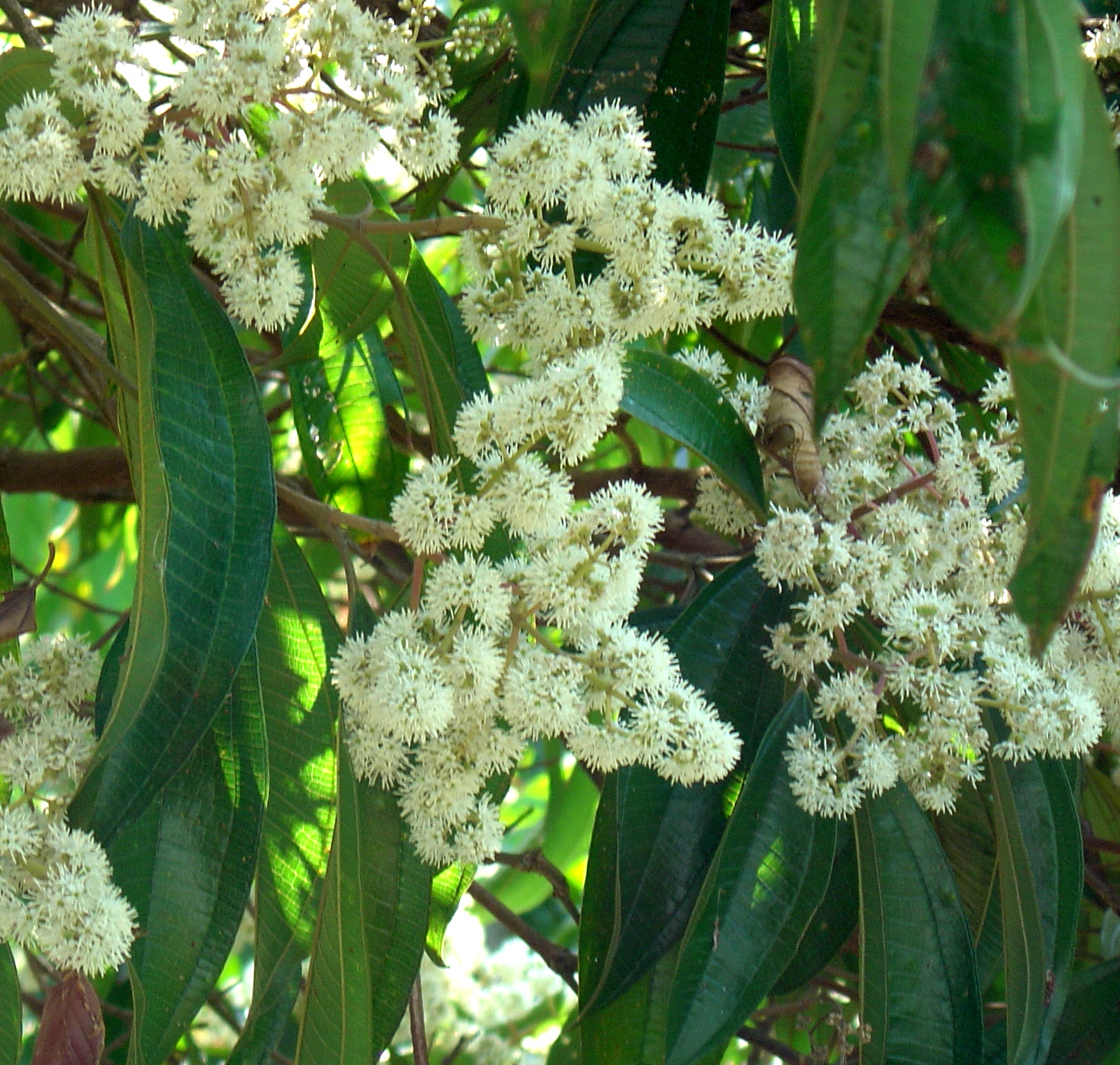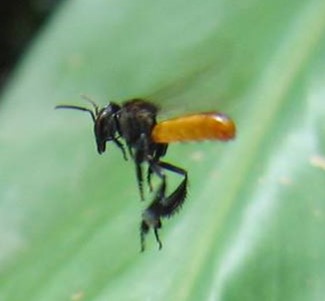The lab is working closely on the ecology and  dispersal processes of Miconia affinis (Melastomataceae), a ‘buzz-pollinated’ understory tree found within forest fragments and shade coffee plantations in the Neotropics. Buzz-pollinated plants are fascinating study subjects because vibration is required in order to remove pollen from their tube-shaped poricidal anthers, and only select species of bees are capable of this movement — both Africanized and European honeybees are incapable of buzz-pollination. Thus the reproductive success of M. affinis can serve as a ‘natural bio-indicator’ of native bee abundance and pollination services. This system allows us to investigate the role of individual traits (e.g., tree, pollinator size) and landscape-level traits (e.g., spatial genetic structure, local density) in mediating pollen and seed dispersal.
dispersal processes of Miconia affinis (Melastomataceae), a ‘buzz-pollinated’ understory tree found within forest fragments and shade coffee plantations in the Neotropics. Buzz-pollinated plants are fascinating study subjects because vibration is required in order to remove pollen from their tube-shaped poricidal anthers, and only select species of bees are capable of this movement — both Africanized and European honeybees are incapable of buzz-pollination. Thus the reproductive success of M. affinis can serve as a ‘natural bio-indicator’ of native bee abundance and pollination services. This system allows us to investigate the role of individual traits (e.g., tree, pollinator size) and landscape-level traits (e.g., spatial genetic structure, local density) in mediating pollen and seed dispersal.
 We are currently investigating pollination and seed dispersal processes for M. affinis in shade coffee and forest habitats in Chiapas, Mexico, and in primary and secondary forests of Central Panama. Thus far we have found pronounced differences in pollinator and seed-disperser communities between habitat types, translating to distinct pollen and seed dispersal patterns and resulting pollen- and seed-mediated gene flow processes across the landscape mosaic.
We are currently investigating pollination and seed dispersal processes for M. affinis in shade coffee and forest habitats in Chiapas, Mexico, and in primary and secondary forests of Central Panama. Thus far we have found pronounced differences in pollinator and seed-disperser communities between habitat types, translating to distinct pollen and seed dispersal patterns and resulting pollen- and seed-mediated gene flow processes across the landscape mosaic.
